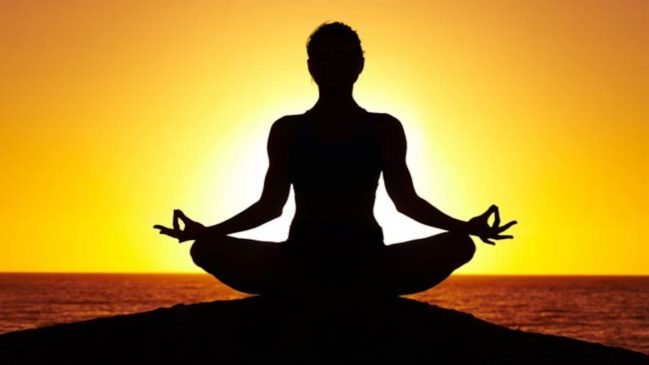Here’s how to create a personalized yoga routine for dealing with depression and anxiety. Follow these effective and easy yoga asanas and pranayama techniques for reslults.
In the quest to manage depression, one potent remedy lies in the cultivation of the mind and body through the transformative practice of yoga. While it demands a measure of effort and willpower, the journey entails equipping oneself with tools to confront and overcome depression.
Read More: Weight Loss With Moong Dal: 5 Ways How This Nutritious Legume Can Help In Losing Those Extra Kilos
Yoga’s Dual Fortification of Body and Mind
The physical dimension of yoga unfolds through the practice of asanas. In this realm, the breath emerges as a vital companion, guiding individuals towards the art of observation and acceptance, regardless of their emotional state. This mindful connection with the present serves as a powerful antidote to stress, anxiety, and ultimately, depression.
Yoga introduces a holistic approach to bolstering happiness and easing symptoms of depression. The practice serves as a conduit for dissolving stress and anxiety, nurturing a mindset rooted in self-care. Incorporating specific asanas, such as Vajrasana, Satolanasana, and Sukhasana, can be transformative in fostering a positive mindset. Let’s delve into the practical execution of these asanas and the integration of mudras for enhanced efficacy.
Pranayama and Meditation Techniques
Udgeeth Pranayama Method:
- Ease into a relaxed seated posture like Sukhasana, Ardhapadmasana, or Padmasana.
- Shut your eyes while maintaining a dignified, upright spine.
- Position your palms facing upward on your knees in Prapthi Mudra.
- Inhale deeply, and upon exhalation, shape your lips to form the sound “Oooooooommm.” Sense the resonating vibrations permeating your being.
Anulom Vilom Pranayama Method:
- Select a comfortable seated position, ideally cross-legged, such as Padmasana, Sukhasana, or Ardhapadmasana.
- Erect your spine and gently close your eyes.
- This technique involves alternating nostril breathing, characterized by inhaling through the left nostril and exhaling through the right.
- Complete a breath cycle by closing the right nostril to inhale through the left, followed by closing the left nostril to exhale through the right, then inhaling through the right nostril.
- Exert gentle pressure with your thumb while closing each nostril, focusing on halting airflow through the right nostril during left-nostril inhalation.
- Attain equilibrium by maintaining consistent pressure during left-nostril inhalation.
Read More: Arthritis: Does Drinking Water While Standing Increase The Risk Of Joint Pain?
Yoga Asanas
Vajrasana in Apana Mudra
- Gradually lower your knees to the ground.
- Position your pelvis atop your heels.
- Keep your heels in close proximity to each other.
- Adopt Apana Mudra.
- Apana Mudra: Join the tips of your middle and ring fingers with the tip of your thumb to balance the Apana Vayu within your body.
Naukasana in Adi Mudra
- Lie on your back.
- Elevate your upper and lower body, achieving balance on your sitting bones.
- Maintain a straight alignment of knees and back.
- Extend your arms parallel to the floor and assume Adi Mudra.
- Adi Mudra: Press your thumb against your palm and touch the tip of your thumb to the base of your little finger joint, forming a fist as your other fingers encircle your thumb.
Savitriasana
- Commence in Samasthithi.
- Gently lower your knees to the mat.
- Ensure that your knees and heels remain parallel.
- Straighten your back, lift both arms skyward, and fix your gaze ahead.
- Do not hold this pose excessively.
Vajrasana in Suchi Mudra
- Softly lower your knees.
- Allow your pelvis to rest on your heels.
- Ensure proximity between your heels.
- Embrace Suchi Mudra
- Suchi Mudra: Firmly clasp your fists and position them in front of your chest. Extend your right arm to the right, index finger pointing skyward. Simultaneously, spread your left arm to the left.
The Quest for Inner Strength
As an essential component of holistic well-being, yoga extends its nurturing touch to both the mind and body. Alongside the asanas mentioned, consider integrating meditation and pranayama techniques. Practices such as Tratak, focusing on a flame, and Chandra Namaskar, the moon salutation, hold the potential to empower you in managing and ultimately overcoming depression.
— With inputs from Himalayan Siddhaa Akshar, Founder, Akshar Yoga Kendraa





































